
We all dream about all sorts of things, with most of our dreams not even remembered.
Many of mine go back to my younger years, living in the Detroit area with family members, especially parents in the dream.
Like most people, I've forgotten 99.99% of those dreams, even the ones that I remembered the following day.
However, early this morning I had an extraordinarily unique dream about the miracle of photosynthesis that caused me to not be able to go back to sleep because it was so profoundly powerful.
I was in a room with numerous friends and classmates, all of them, emphatically debating about how CO2 was destroying the planet.
I struggled to get everyone to shut up, then proceeded to explain photosynthesis to them in a way that I had never done before in the waking hours of my life. Long time readers know how much time I've spent on photosynthesis but this was different and will be fun to share from a new perspective.
The origins of photosynthesis and details of the chemical process going on!
https://en.wikipedia.org/wiki/Evolution_of_photosynthesis
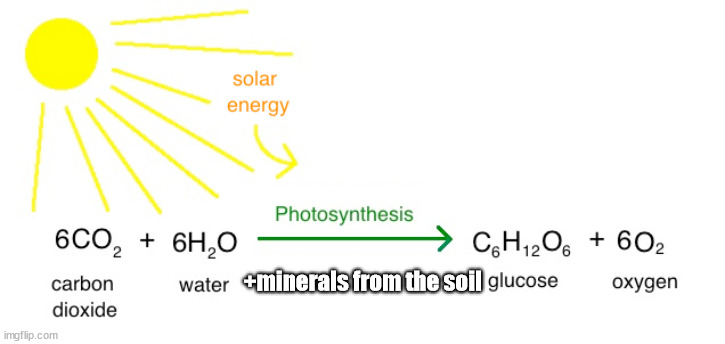
The evolution of photosynthesis refers to the origin and subsequent evolution of photosynthesis, the process by which light energy is used to assemble sugars from carbon dioxide and a hydrogen and electron source such as water. It is believed that the pigments used for photosynthesis initially were used for protection from the harmful effects of light, particularly ultraviolet light. The process of photosynthesis was discovered by Jan Ingenhousz, a Dutch-born British physician and scientist, first publishing about it in 1779.[1]
The first photosynthetic organisms probably evolved early in the evolutionary history of life and most likely used reducing agents such as hydrogen rather than water.[2] There are three major metabolic pathways by which photosynthesis is carried out: C3 photosynthesis, C4 photosynthesis, and CAM photosynthesis. C3 photosynthesis is the oldest and most common form. A C3 plant uses the Calvin cycle for the initial steps that incorporate CO2 into organic material. A C4 plant prefaces the Calvin cycle with reactions that incorporate CO2 into four-carbon compounds. A CAM plant uses crassulacean acid metabolism, an adaptation for photosynthesis in arid conditions. C4 and CAM plants have special adaptations that save water
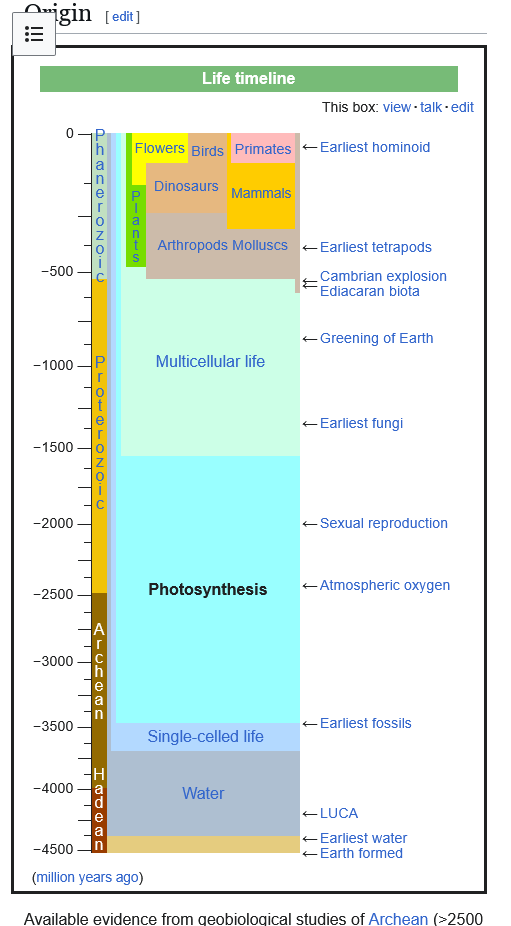
| 4.6 billion years ago | Earth forms |
| 3.4 billion years ago | First photosynthetic bacteria appear |
| 2.7 billion years ago | Cyanobacteria become the first oxygen producers |
| 2.4 – 2.3 billion years ago | Earliest evidence (from rocks) that oxygen was in the atmosphere |
| 1.2 billion years ago | Red and brown algae become structurally more complex than bacteria |
| 0.75 billion years ago | Green algae outperform red and brown algae in the strong light of shallow water |
| 0.475 billion years ago | First land plants – mosses and liverworts |
| 0.423 billion years ago | Vascular plants evolve |
Re: Re: Re: The Beauty of Earth
By metmike - March 3, 2025, 5:18 p.m.
Nature
https://en.wikipedia.org/wiki/Nature
Nature is an inherent character or constitution,[1] particularly of the ecosphere or the universe as a whole. In this general sense nature refers to the laws, elements and phenomena of the physical world, including life. Although humans are part of nature, human activity or humans as a whole are often described as at times at odds, or outright separate and even superior to nature.[2]
During the advent of modern scientific method in the last several centuries, nature became the passive reality, organized and moved by divine laws.[3][4] With the Industrial Revolution, nature increasingly became seen as the part of reality deprived from intentional intervention: it was hence considered as sacred by some traditions (Rousseau, American transcendentalism) or a mere decorum for divine providence or human history (Hegel, Marx). However, a vitalist vision of nature, closer to the pre-Socratic one, got reborn at the same time, especially after Charles Darwin.[2]
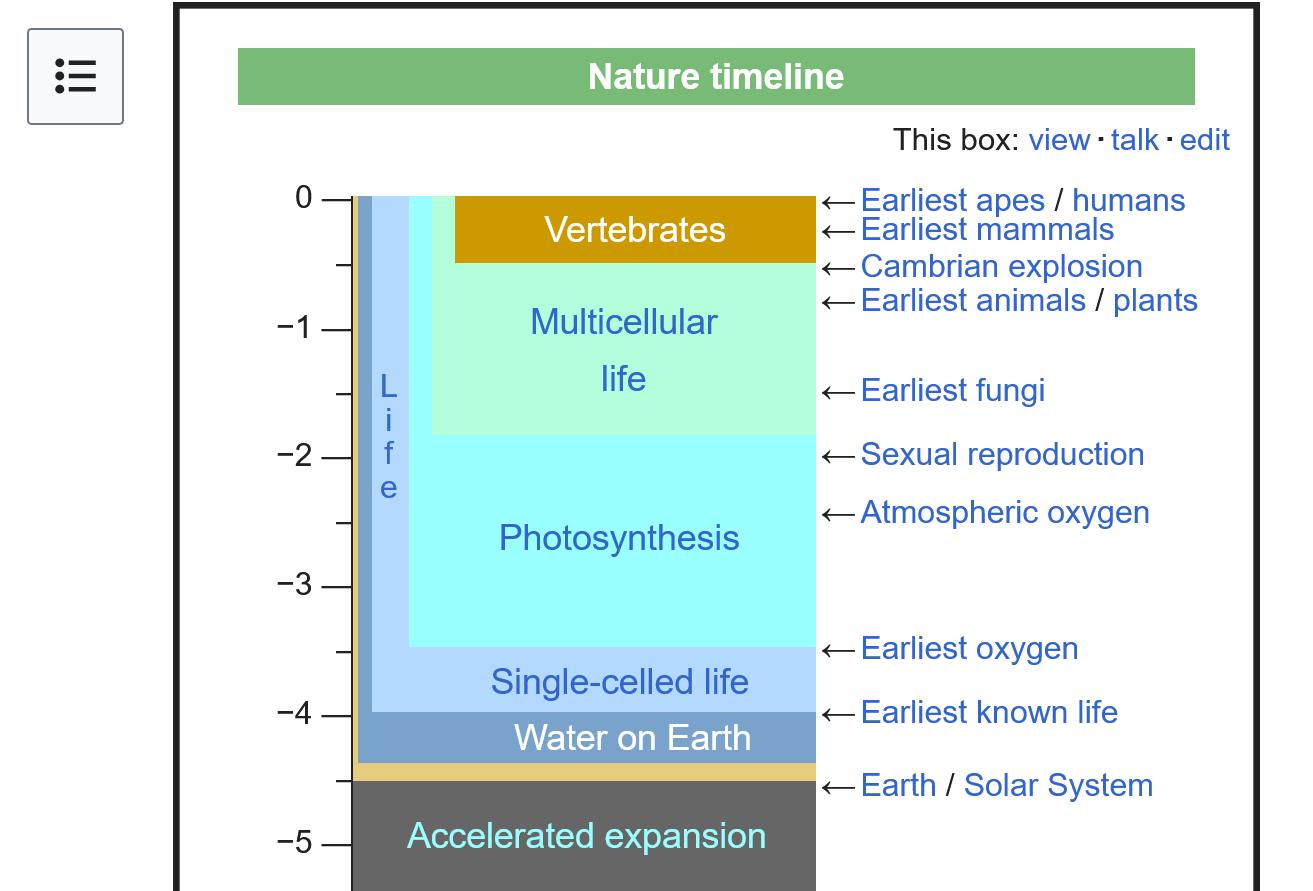 Billions of years on the left.
Billions of years on the left.
Note above, that we owe everything to Photosynthesis:
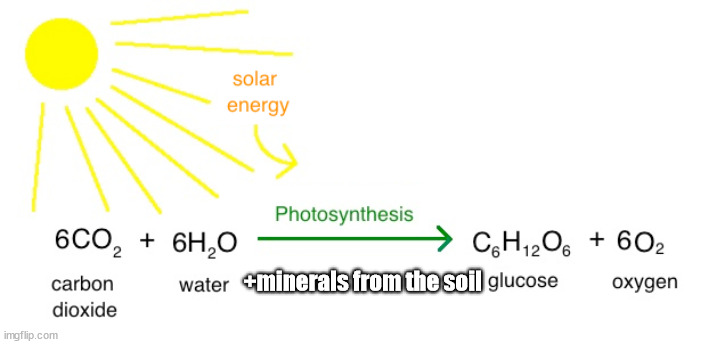
The optimal level of the beneficial gas, CO2 for photosynthesis is around 900 parts per million for most plants and life. We are still less than half that optimal level:
Optimal CO2 for life more than double current level: See the proof with thousands of studies. Showing Scientific American.....and mainstream science sold to us........ to be wrong about plants and the affects from Climate Change. December 2020
https://www.marketforum.com/forum/topic/62784/
Death by greening:
https://www.marketforum.com/forum/topic/69258/
Anybody that uses the term "carbon pollution" for carbon dioxide is either not a scientist or is a blatantly biased scientist playing politics.
Using that term, carbon pollution is scientifically, exactly like using the term hydrogen pollution to describe water vapor/H2O in the air.
We know that a water molecule is formed from 2 atoms of hydrogen and 1 atom of oxygen. Water/H2O is neither hydrogen or oxygen. It's a totally different compound/molecule, using atoms held together by covalent bonds. It's essential for all life on this planet.
 | |||
| |||
++++++++++++++++++++++++++++++++
Exactly the same with CO2/carbon dioxide. It's formed from 2 atoms of oxygen and 1 atom of carbon. It is NOT oxygen and it certainly is not the solid, carbon. It's a totally different compound/molecule, with 1 C atom, covalently bonded with 2 O atoms. It's an essential GAS! At 426 parts per million, CO2 is less than 50% of the optimal level for most life(assuming that most animals eat plants or something that ate plants).
https://en.wikipedia.org/wiki/Carbon_dioxide
 | |||
| |||
+++++++++++++++++++++++++++
Carbon is a SOLID! Many thousands of compounds have carbon atoms in them but they are NOT CARBON.
https://en.wikipedia.org/wiki/Carbon
| Carbon | |
|---|---|
 Graphite (left) and diamond (right), two allotropes of carbon Graphite (left) and diamond (right), two allotropes of carbon | |
| Allotropes | graphite, diamond and more (see Allotropes of carbon) |
| Appearance |
|
+++++++++++++++
https://en.wikipedia.org/wiki/List_of_compounds_with_carbon_number_1
+++++++++++++++++++++++
We know exactly why people use the ANTI science term, carbon pollution for CO2.
When you hear a source using that term or read it, you can be certain that they are either scientifically ignorant on this topic or intentionally using it to try to trick people into believing that the beneficial gas, CO2 is actually a pollutant and is bad, like black carbon or solid carbon particulate matter in the air.
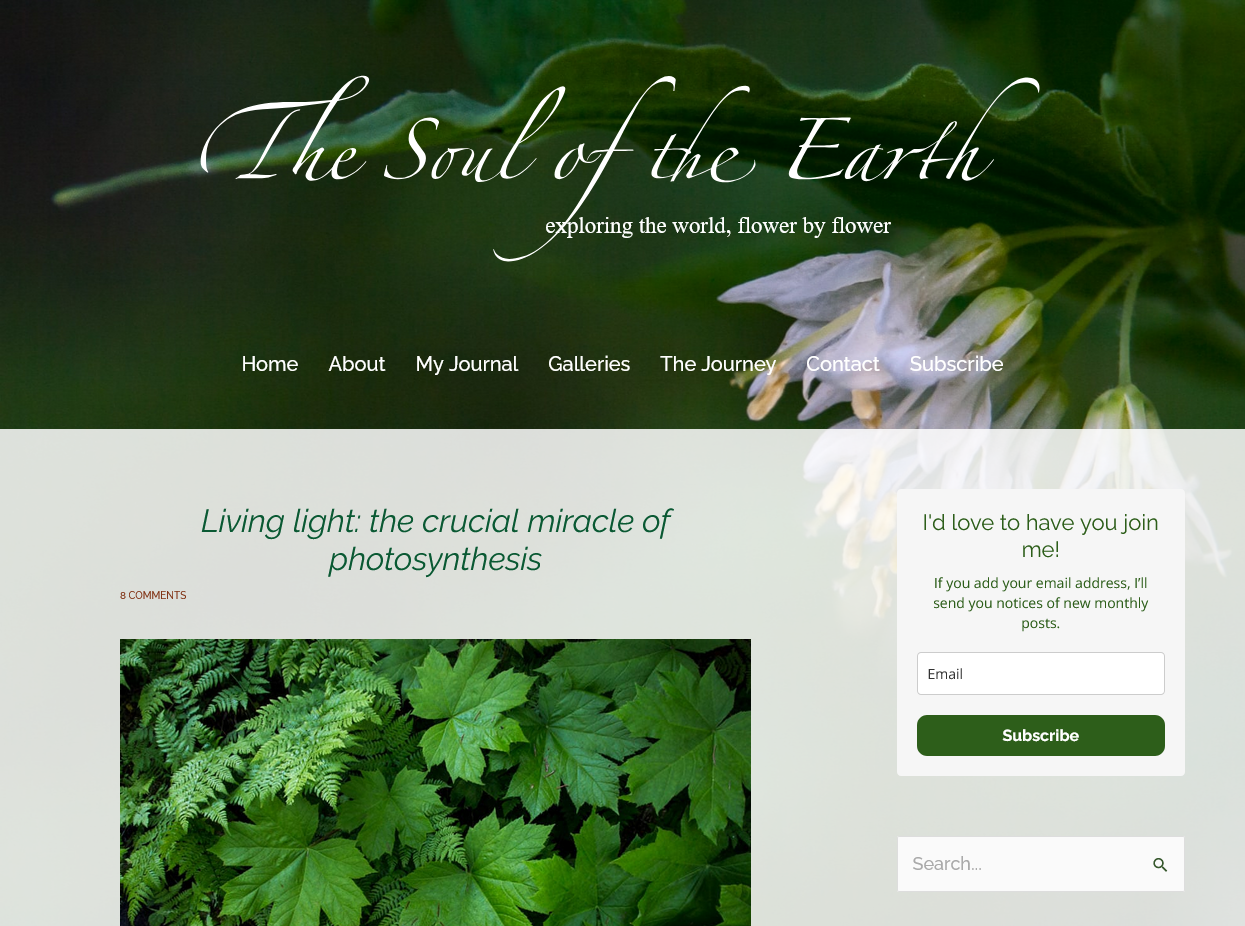
https://thesouloftheearth.com/photosynthesis-living-light/
+++++++++++++++++++++=
The Miracle of Photosynthesis: How Plants Power the
Planet
INTRODUCTION
Photosynthesis is one of the most remarkable and fundamental
processes in the natural world. It's the mechanism by which
green plants, algae, and some bacteria harness the power of
sunlight to convert carbon dioxide and water into glucose
and oxygen. This process not only sustains the life of
these organisms but also plays a vital role in maintaining
the delicate balance of Earth's ecosystems. In this article,
we will explore the fascinating world of photosynthesis, its
significance, and its impact on our planet.
Photosynthesis is a complex biochemical process that takes
place in the chloroplasts of plant cells, specifically in the
green pigment chlorophyll de Wit, (1965).
https://www.amazon.com/Light-Life-miracle-photosynthesis-planet/dp/1780725426
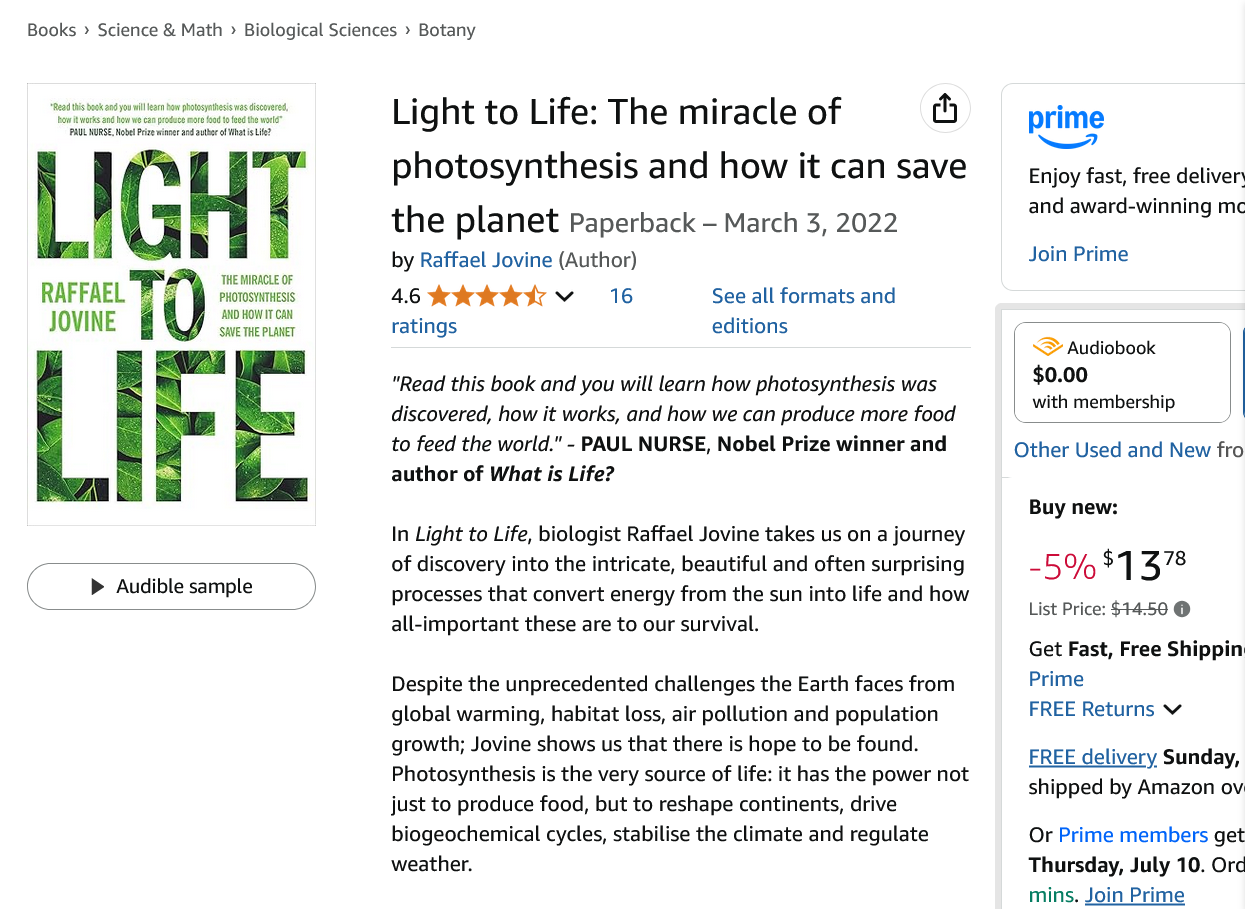
++++++++++++++++++++++++++
Photosynthesis: Miracle of Organic Life and Its
Technologies
https://www.davidpublisher.com/Public/uploads/Contribute/5a823db0a9bd2.pdf
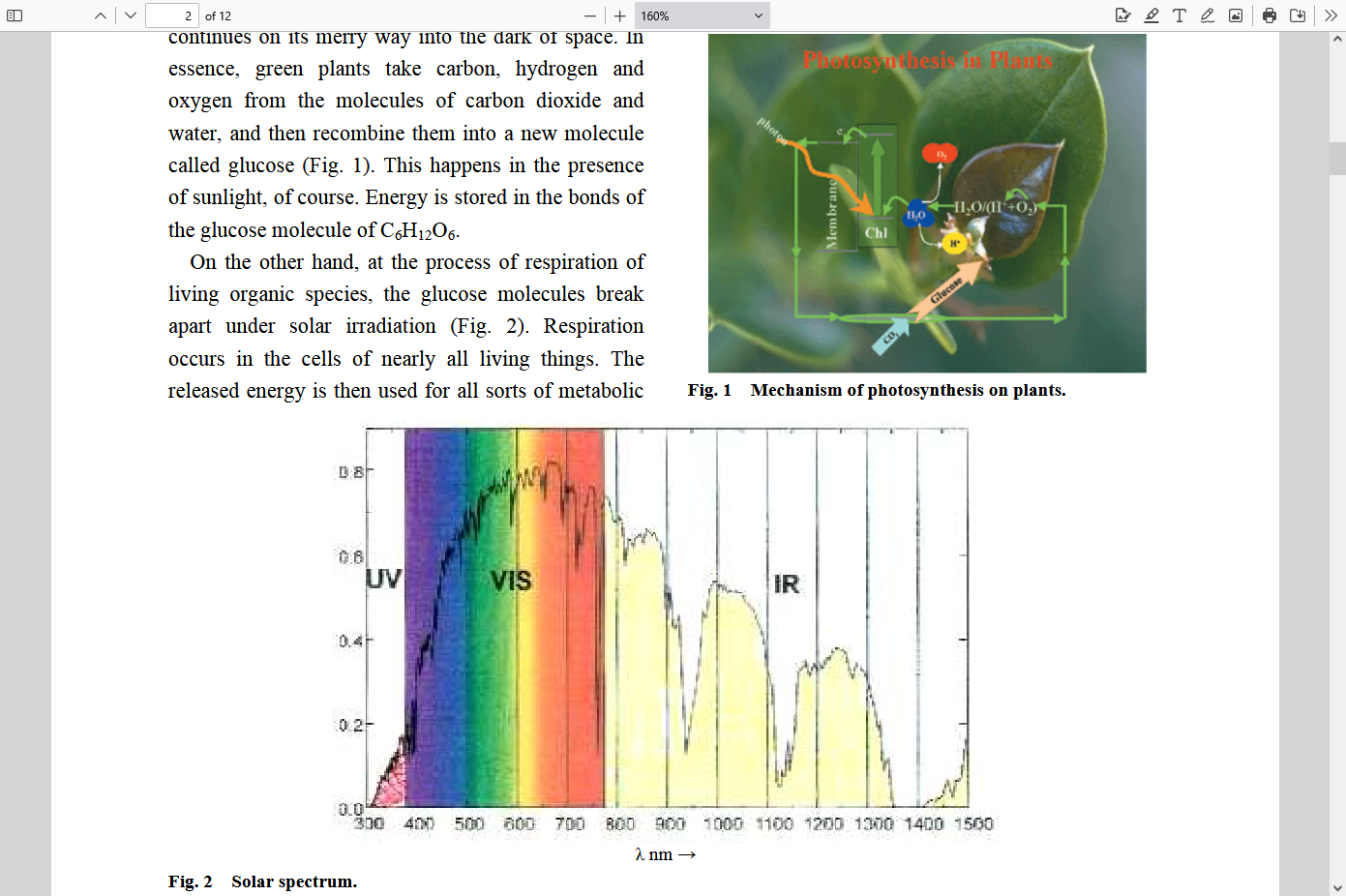
https://en.wikipedia.org/wiki/Calvin_cycle
The Calvin cycle, light-independent reactions, bio synthetic phase, dark reactions, or photosynthetic carbon reduction (PCR) cycle[1] of photosynthesis is a series of chemical reactions that convert carbon dioxide and hydrogen-carrier compounds into glucose. The Calvin cycle is present in all photosynthetic eukaryotes and also many photosynthetic bacteria. In plants, these reactions occur in the stroma, the fluid-filled region of a chloroplast outside the thylakoid membranes. These reactions take the products (ATP and NADPH) of light-dependent reactions and perform further chemical processes on them. The Calvin cycle uses the chemical energy of ATP and the reducing power of NADPH from the light-dependent reactions to produce sugars for the plant to use. These substrates are used in a series of reduction-oxidation (redox) reactions to produce sugars in a step-wise process; there is no direct reaction that converts several molecules of CO2 to a sugar. There are three phases to the light-independent reactions, collectively called the Calvin cycle: carboxylation, reduction reactions, and ribulose 1,5-bisphosphate (RuBP) regeneration.
Though it is also called the "dark reaction", the Calvin cycle does not occur in the dark or during nighttime. This is because the process requires NADPH, which is short-lived and comes from light-dependent reactions. In the dark, plants instead release sucrose into the phloem from their starch reserves to provide energy for the plant. The Calvin cycle thus happens when light is available independent of the kind of photosynthesis (C3 carbon fixation, C4 carbon fixation, and crassulacean acid metabolism (CAM)); CAM plants store malic acid in their vacuoles every night and release it by day to make this process work
Overview of the Calvin cycle and carbon fixation
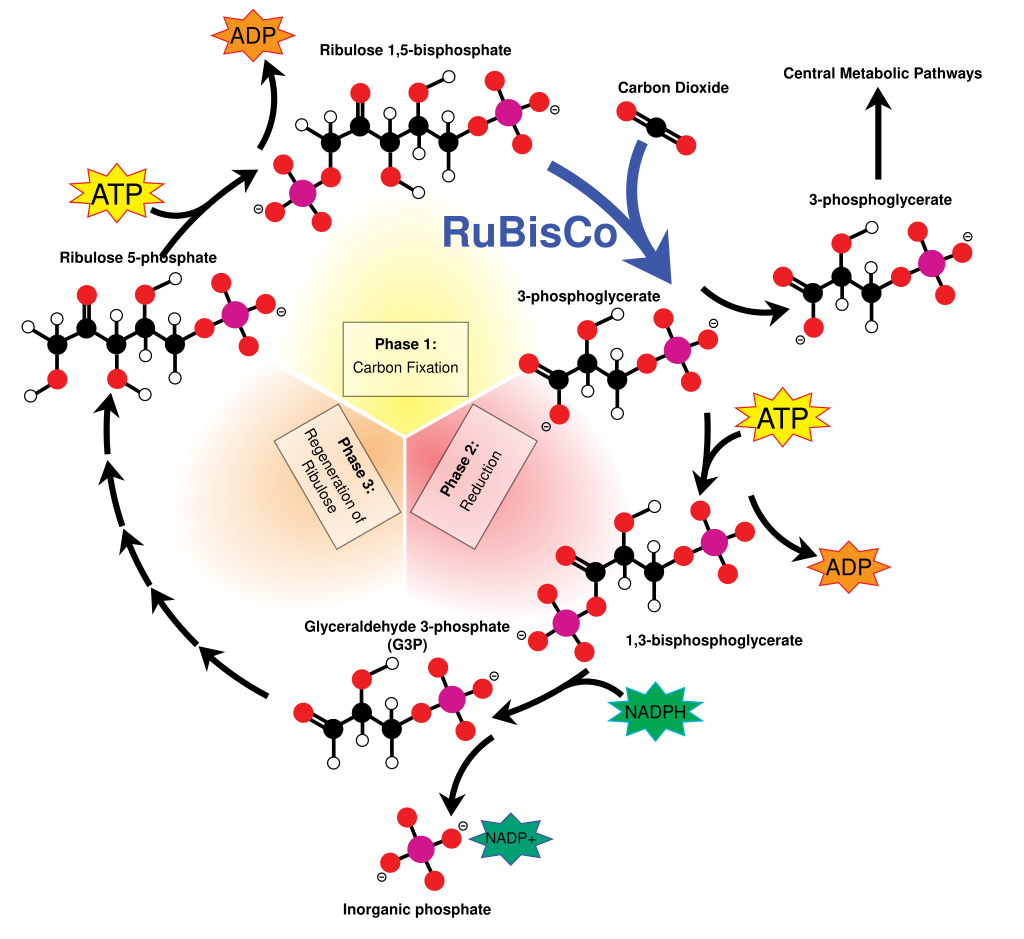
Calvin cycle step 1 (black circles represent carbon atoms)

Calvin cycle steps 2 and 3 combined

Regeneration stage of the Calvin cycle below:
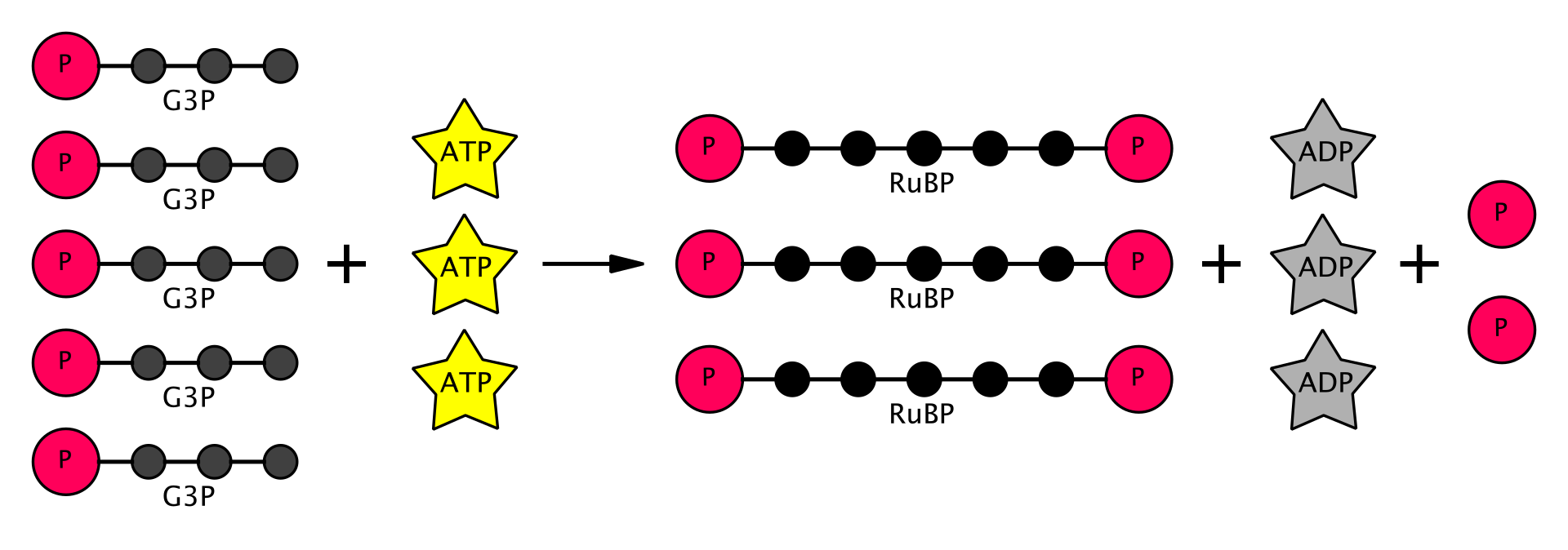
Below: The regeneration stage of Calvin's cycle. Substances and their parts are outlined in colors: green - carbon accepting aldoses, pink - ketoses-donors of three-carbon groups, yellow - parts of ketoses remaining after donation of two-carbon keto-groups highlighted in orange. Enzymes are also highlighted: aldolases in purple and transketolases in red.
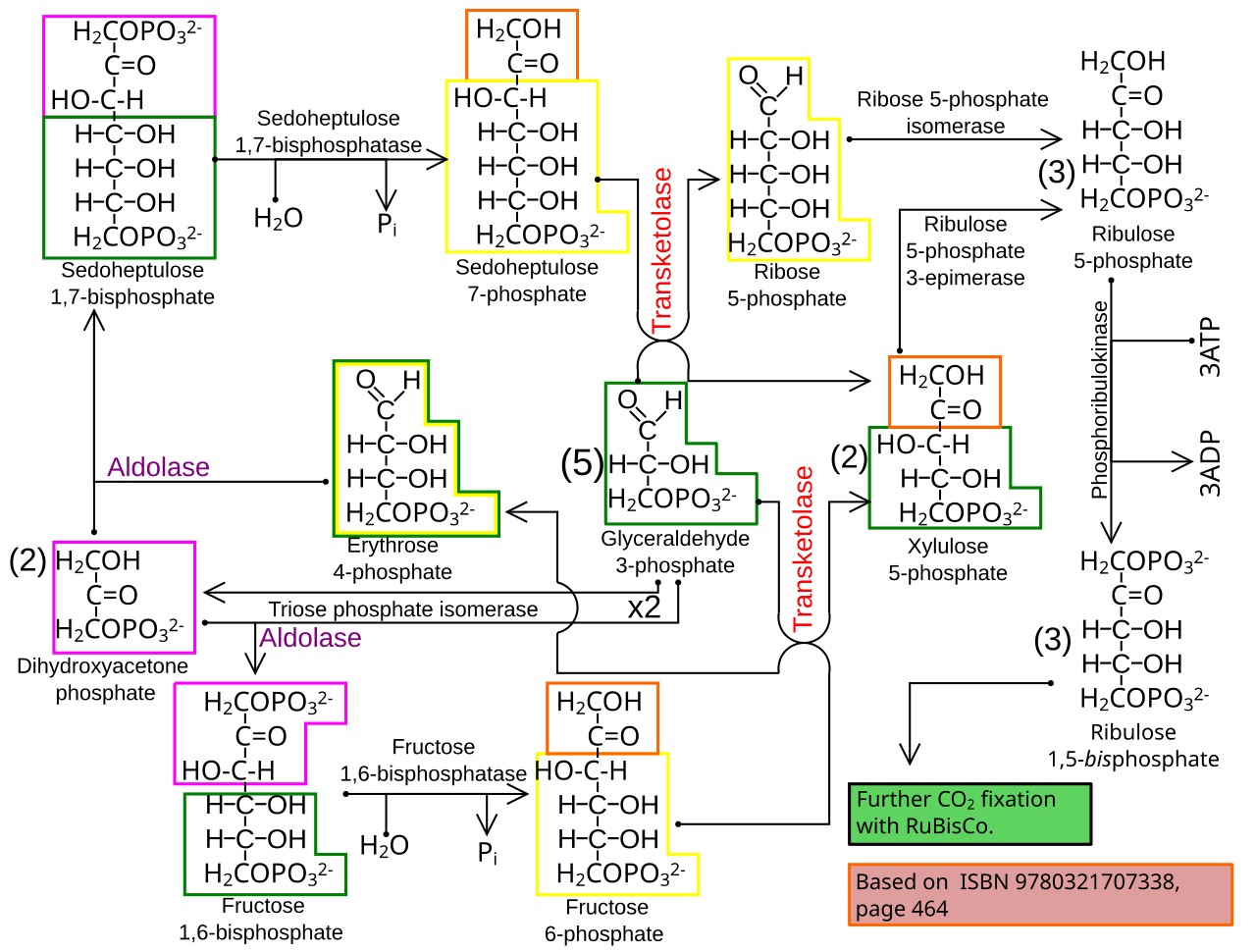
Simplified C3 cycle with structural formulas below: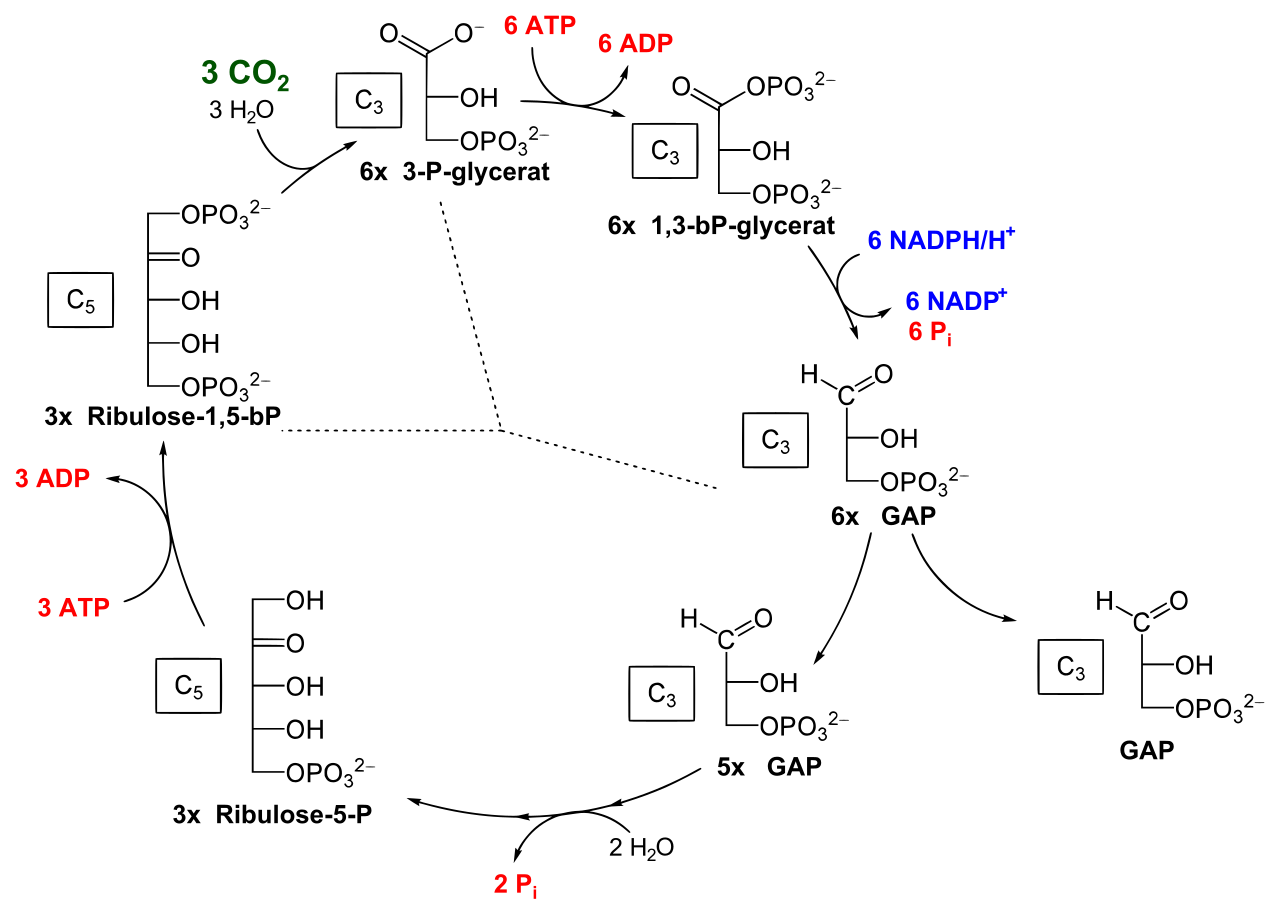
The equation of the overall Calvin cycle is shown diagrammatically below.

+++++++++++++++++
It really is a miracle!